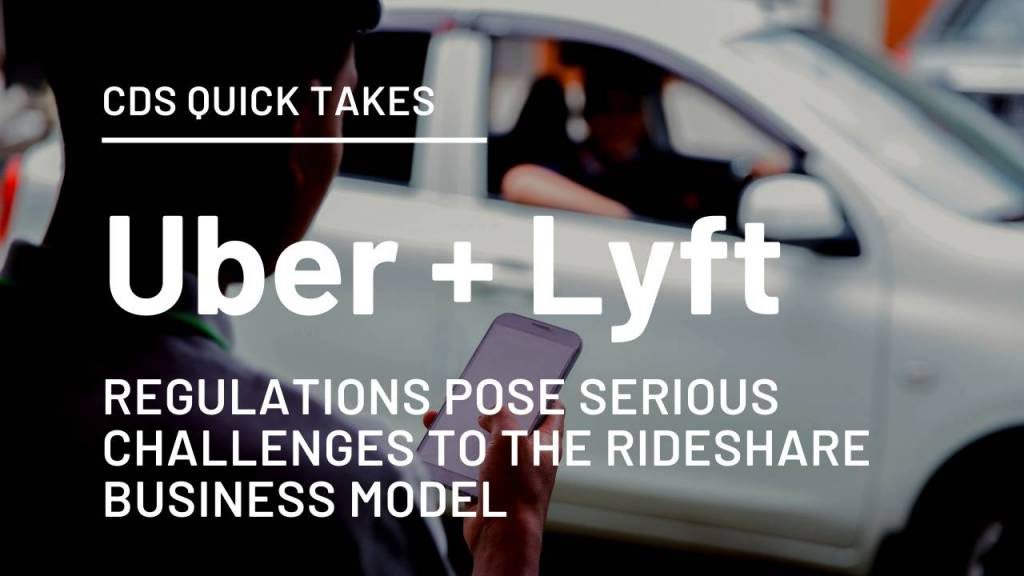Uber, Lyft Face Serious Challenges to Their Business Models
October 7th, 2020Topics: Apps Customer Infrastructure Mobile Operations Products / Services

We started this week’s conversation with the following prompt: “The City of Seattle recently announced it would require Uber and Lyft to pay the drivers in its city the minimum wage of $16 per hour, following New York City’s example. What will the impact of these policies be on companies like Uber and Lyft?”
After a lively discussion, we didn’t leave the conversation with a “right” answer. But the conversation took some interesting turns as we began discussing the impacts of an increasingly scrutinizing regulatory environment paired with the impacts of COVID on the ride-sharing economy.
One noteworthy observation here is this: if Uber and Lyft are required to pay minimum wage to their drivers in Seattle, New York, and (presumably) other cities in the future, there is a scenario where there will be a market correction and riders may be forced to pay increased rates as a result. In truth, this was always the case, even without higher wages paid to drivers, but regulations could speed up the arrival of price hikes for riders.
Uber isn’t exactly caught off guard with these changes in regulation: Since the Covid19 pandemic hit, Uber has aggressively shifted its “people” ride sharing model to food delivery via Uber Eats and its acquisition of Postmates for $2.65b in July.
Bottom Line: Does ongoing regulatory scrutiny throw a wrench into Uber’s and Lyft’s ride sharing plans? Probably. But Uber hopes to make up for lost rider revenue with increased food deliveries, especially as the pandemic continues to keep most American cities quieter than usual.
The impacts of Covid led us to another key takeaway. Even without increased regulatory scrutiny, Covid has decimated Uber’s and Lyft’s ride sharing business model. According to Q2 2020 earnings reports, Uber’s gross bookings were down 35% year-over-year, resulting in a decline of $10.2 billion. In a non-Covid environment, losing even 10% market share to a competitor would be enough to think seriously about new revenue streams to keep a business relevant. There is one silver lining: Uber’s diversified portfolio of delivery grew 114% year over year. Regardless, a reduction of 35% in bookings is more than a wake-up call: it is an all-hands-on-deck moment for the company.
With these seismic shifts in business models, Uber continues to make aggressive moves: they just added a former Amazon executive as their new CTO. The new hire, who has extensive experience in marketplaces, may represent a large shift in Uber’s overall business model, moving its primary focus away from just ride sharing and into a broader deliveries-as-a-service and a yet-unclear marketplace.
A lot of this is speculation, of course. No one could have predicted that we’d be where we are today a year ago. Our final takeaway is this: you don’t always have to have the “right” answer, but knowing which questions to ask and poking holes in your existing strategies can be healthy, useful exercises.











